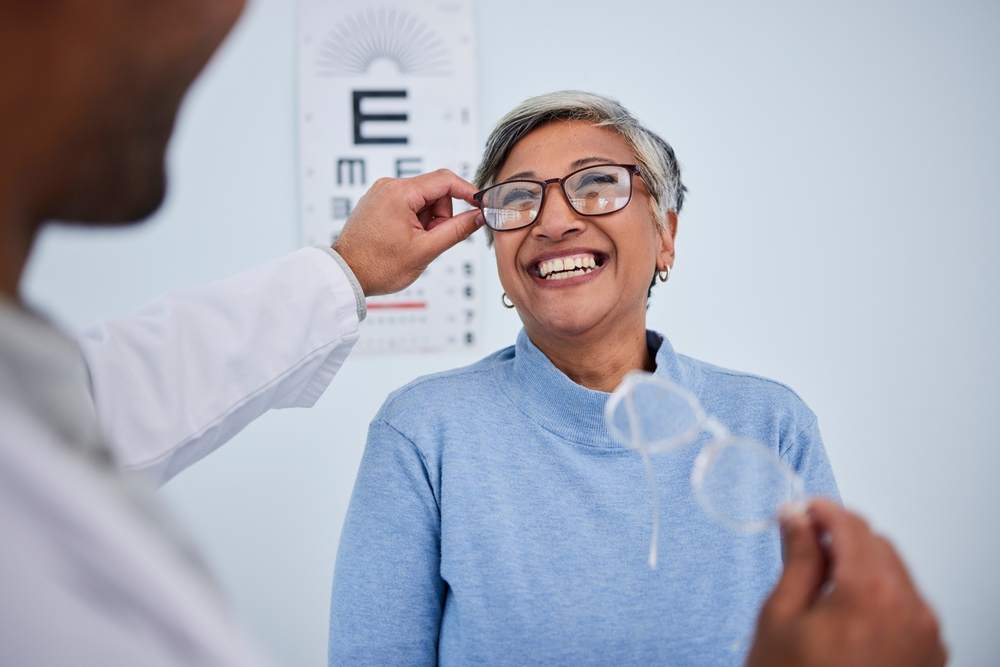
When most people think of eye exams, they immediately think of using their vision insurance plan—like VSP or EyeMed. While vision plans can help with basic coverage, they often come with limitations that affect both the care you receive and the choices you have. What many patients don’t realize is that getting an eye exam without a vision plan can actually provide better value, more time with the doctor, and a more thorough experience overall.
Let’s break down why.
1. More Time With Your Doctor
Vision plans often reimburse doctors at such low rates that practices are forced to see a high volume of patients each day—sometimes 40 to 50 people—in order to stay in business.
When you pay directly (without going through a vision plan), your doctor isn’t rushed. Instead of squeezing you into a 10-minute slot, they can spend 30–45 minutes getting to the root of your eye health concerns. This means:
More time to ask questions
A deeper discussion about your symptoms
A truly personalized care plan
2. A More Thorough Eye Exam
Vision plans typically cover only the basics, and they often do not include important tests like retinal imaging (taking a detailed photo of the back of your eye). These advanced tests help detect issues like glaucoma, macular degeneration, and even signs of systemic conditions like diabetes.
When you pay directly, you can get the complete exam—not just the bare minimum that your plan approves.
3. Freedom of Choice With Glasses
Another hidden drawback of vision plans is that they restrict which frames and lenses you can choose. Yes, the frames might seem cheaper, but they’re usually limited to certain brands and lower-quality options.
Without a vision plan dictating your choices, you have total freedom—you can select higher-quality lenses and stylish frames that fit your lifestyle, without worrying about plan restrictions.
4. A Relaxed, Stress-Free Experience
When an exam isn’t bound by insurance rules, the entire experience feels different. There’s no rush, no checklist dictated by a plan—just genuine care focused on you. Patients often describe direct-pay exams as more relaxed and comfortable because the doctor is free to spend time addressing all of their concerns.
5. Using Your Vision Plan for Reimbursement (Out-of-Network)
Here’s the part many patients don’t know: Even if you get your exam at an office that doesn’t take your vision plan, you may still be eligible for reimbursement. Depending on your plan, you could get part or even 100% of the cost of your exam back.
This way, you get the best of both worlds:
A thorough, unrushed exam from a doctor who has time for you
The ability to still benefit from your vision plan through reimbursement
Frequently Asked Questions (FAQs)
1. Can I still use my vision plan if the office doesn’t accept it?
Yes. Many patients pay out-of-pocket and then submit their receipt to their vision plan for reimbursement. Depending on your plan, you may get back part or even all of the exam cost.
2. Is a medical eye exam different from a vision plan exam?
Yes. Vision plans typically cover routine exams for glasses or contacts. Medical insurance may cover visits for eye problems like infections, dry eye, diabetes, or glaucoma. Paying directly for a comprehensive exam allows for both routine and medical-level attention.
3. Why are eye exams without vision plans more thorough?
Because the doctor isn’t restricted by what the plan covers, they can include advanced testing (like retinal photos or OCT scans) and spend more time discussing your concerns.
4. Will I have fewer choices in glasses if I use my vision plan?
Yes. Vision plans often restrict you to specific brands or frame lines. Without a plan, you can choose from all available options—often higher quality and longer-lasting frames.
5. Are out-of-pocket eye exams more expensive?
Not necessarily. While the upfront fee may look higher, it often includes tests that vision plans don’t cover. Plus, when you factor in reimbursement, the cost may be similar or even less.
6. What if I only need glasses—shouldn’t I just use my plan?
If you only want basic frames, your plan may help. But if you value style, durability, and lens quality, you’ll likely find better options when you’re not restricted by plan limits.
7. How often should I get an eye exam without a vision plan?
Most adults should have an eye exam every 1–2 years, depending on age and risk factors. Paying directly makes it easier to schedule on your own terms, not just when your benefits reset.
8. Do vision plans cover advanced screenings like retinal imaging?
Most don’t. These important tests are usually considered “extras” and require an additional fee. Without a plan, your exam can include these advanced screenings as part of comprehensive care.
9. Will I lose money if I don’t use my vision plan?
Not at all. In fact, you may gain value. Direct-pay exams can be reimbursed, and you get more complete care, freedom of choice in glasses, and more time with your doctor.
10. Why would someone with vision insurance choose to pay out-of-pocket?
Because eye health is too important to rush. Patients who want a personalized, thorough, and unrushed exam often choose to pay directly—even if they have insurance—so they can get the best care possible.
Final Thoughts & Call to Action
At Family Eye Wellness, we believe your eye exam should never feel rushed or limited by what a vision plan allows. By choosing a direct-pay eye exam, you’re choosing time, thoroughness, and freedom of choice.
✅ Get a complete, detailed exam
✅ Choose from all frame and lens options
✅ Submit for reimbursement from your vision plan
Your vision deserves more than just the basics.
👉 Schedule your comprehensive eye exam with Family Eye Wellness today—and experience the difference for yourself.
Request an appointment









